


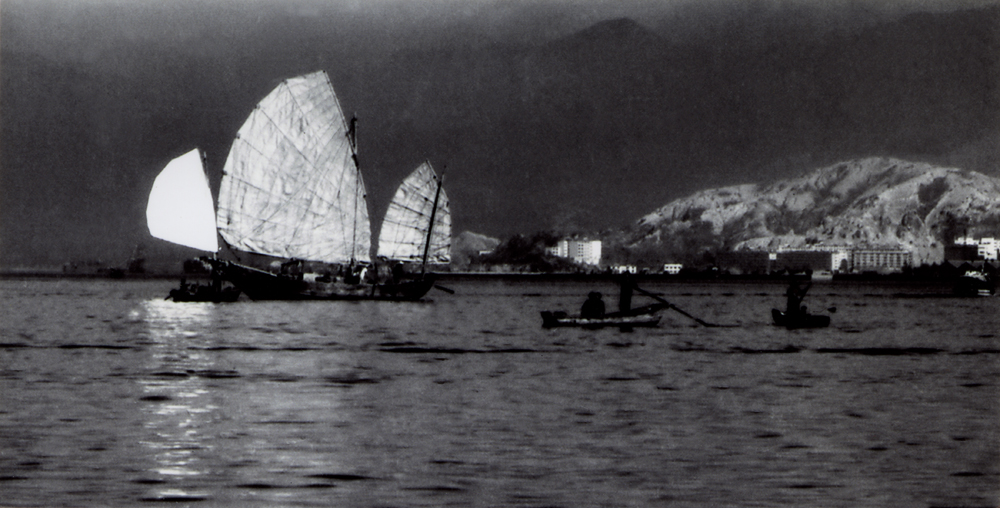
A Kung Ngam in Shau Kei Wan in the old days. The sails were a signature of the fishing waterfront.
卅年裹足筲箕灣 滄海桑田轉瞬間
大廈如林填海港 提機何處覓歸帆

The dyeing workers were drying the bleached fabric at the arena. It was a hot photographic topic in the 1950s. Due to technological advancement, fabrics are no longer dried outdoors now. The workers were working under the fierce sun and rained sweat. The stripes accentuated the upward looking subject at the bottom of the U-shaped composition.
烈陽似火炙肌膚 茹苦含辛永記牢
牛鬼蛇神難利誘 志堅品格樹楷模
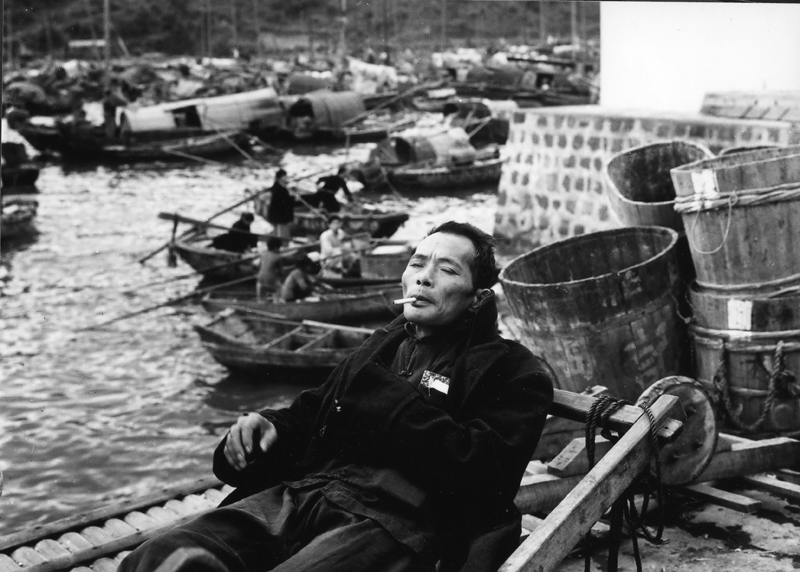
Sai Kung fisherman at rest with cigarette.

Un Chau Estate was a low cost housing estate completed in 1969 by the government.
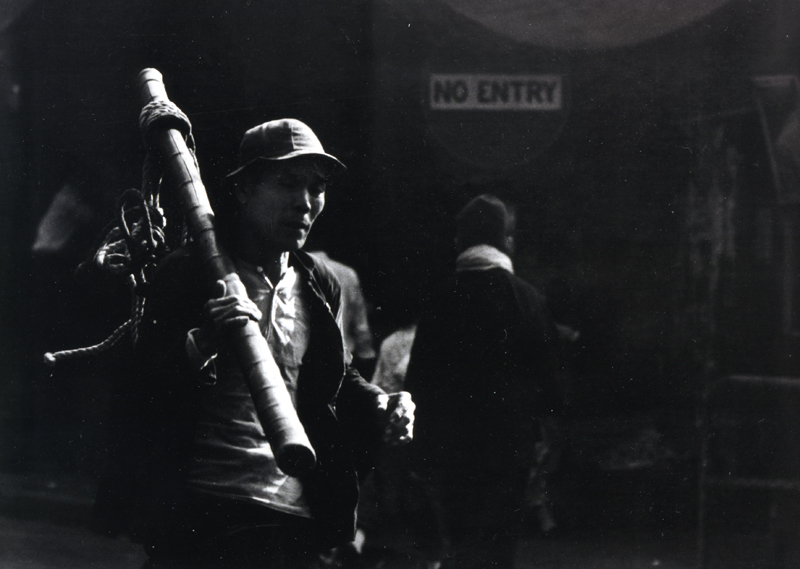
Coolies on the streets. Before the 1960s, at warehouses, wharfs, factories and large organizations one often saw groups of “coolies”, with “coolie leaders” recruiting coolies for their boss and sending them to work at designated places on a fixed daily wage. Bamboo sticks and hemp ropes were hung at sign posts or lamp posts for identification purposes.
俗謂行船勝泊灣 辛勞竟日為三餐
一般市況呈平淡 百業商場現困難
畫夜奔馳多涕淚 晨昏忐忑乏歡顏
人窮不墮青雲志 逆境生涯力挽瀾
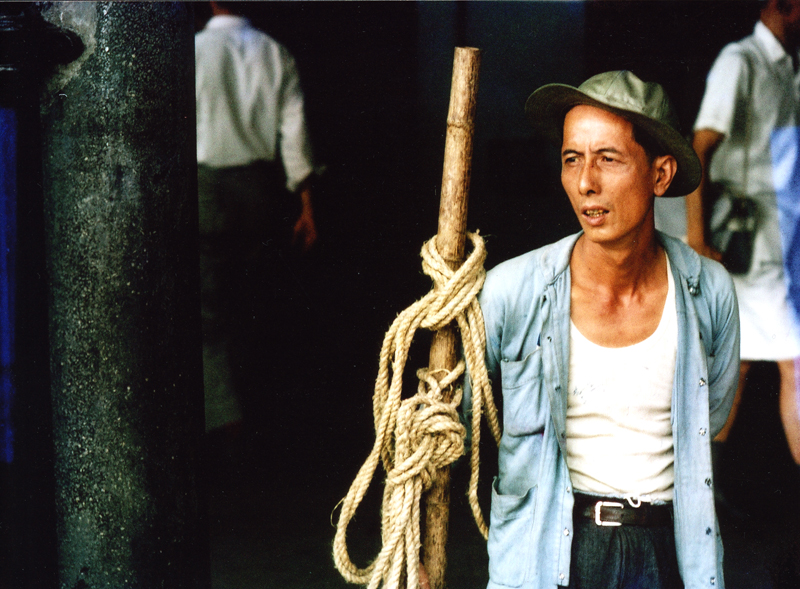
Coolies at Central Pier.
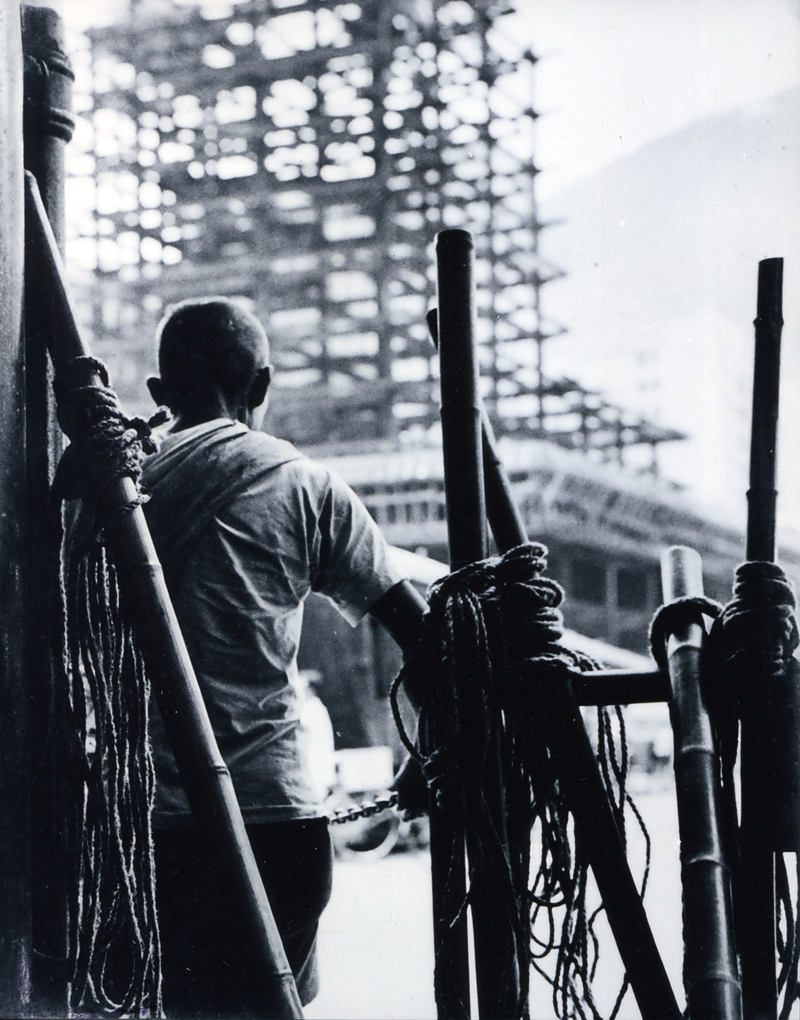
Coolies waiting for work. Those who sold labour for a living might not have the opportunity for higher education, but boast morality and the sense of righteousness, contributing their honest efforts to society. The bamboo stick in the picture was a tool of trade and a mark of manual labour. The sideways lighting created a sense of depth even amidst the complex lines of the city. The picture shows the frame of the Hang Seng Building – then under construction – and on the right is the main building that ensued.
烈陽似火炙肌膚 茹苦含辛永記牢
牛鬼蛇神難利誘 志堅品格樹楷模
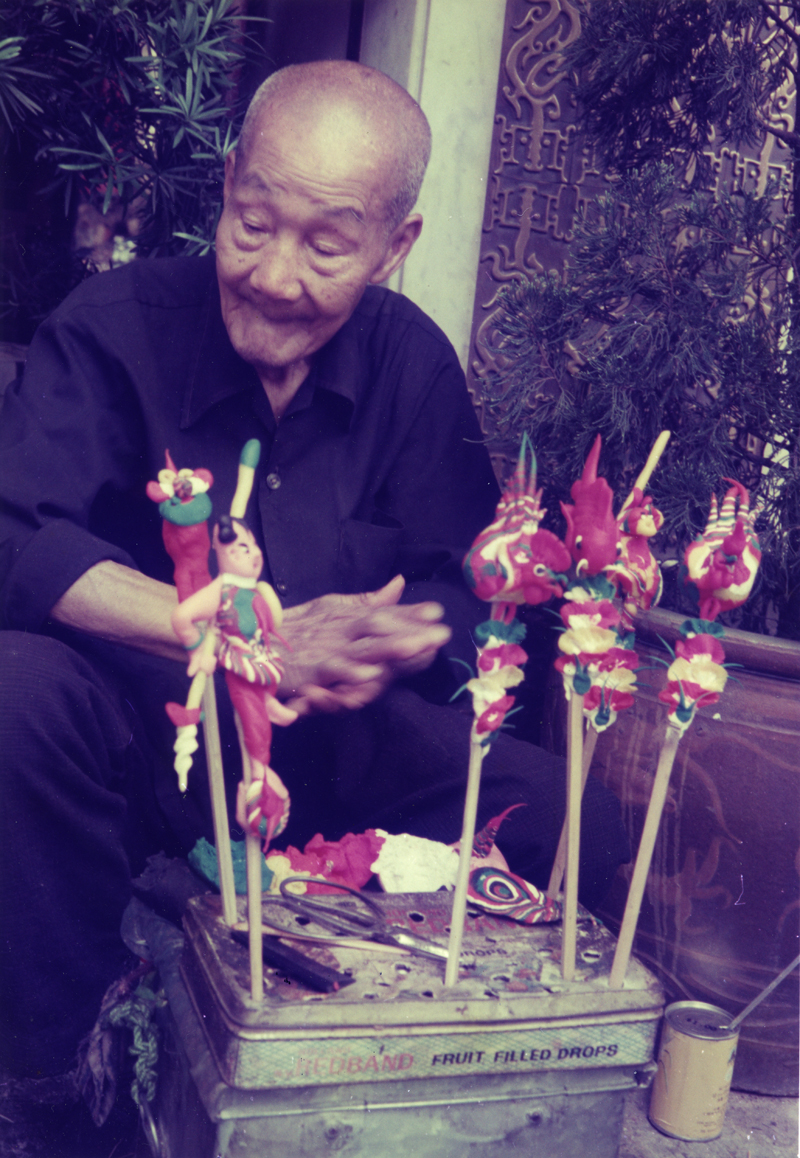
These hand-made dolls were used in different local street preformances.
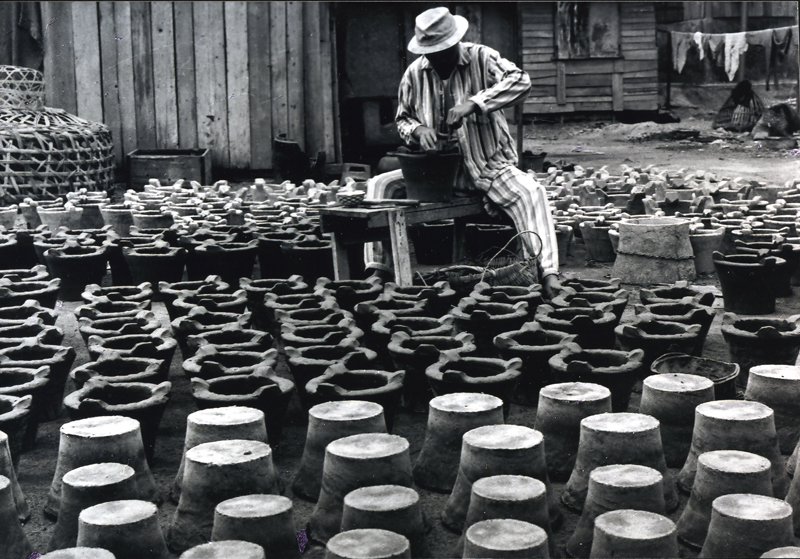
A disappearing trade – wind furnace. In the pre-1950s, wood was a major fuel and wind furnaces were commonly used in households. The furnace also fit for burning charcoal. The once-popular outside catering service by Chinese restaurants required the transportation of such huge furnaces to the home of the affluent customers. Since kerosene became a common fuel, the kerosene cooker replaced the wind furnace and was itself later replaced by gas cookers. The picture was taken in the New Territories. In the picture the man was making the mould for the furance, which will be baked and tied up by wires before being sold to the public.
黃連優質製風爐 耐用安全加鐵箍
廚具燃油新改革 推銷難望展鴻圖
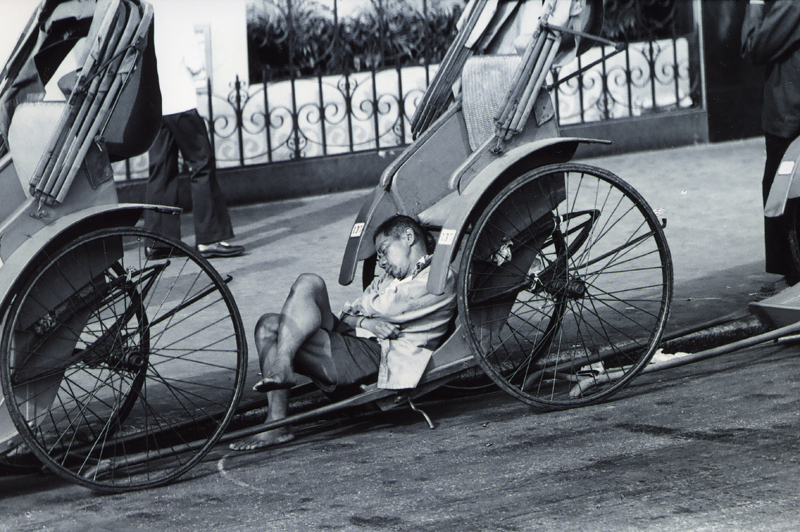
Outside Star House, Tsim Sha Tsui, a rickshaw man was waiting for business while he was taking a nap.

Outside Star House, Tsim Sha Tsui. The model and a borrowed rickshaw was featured in a promotion photo shot.

In the past, sand was collected from the sea and transported to the North Point Wharf. Coolies boarded the boats to move sand and mud to the North Point Warehouse.
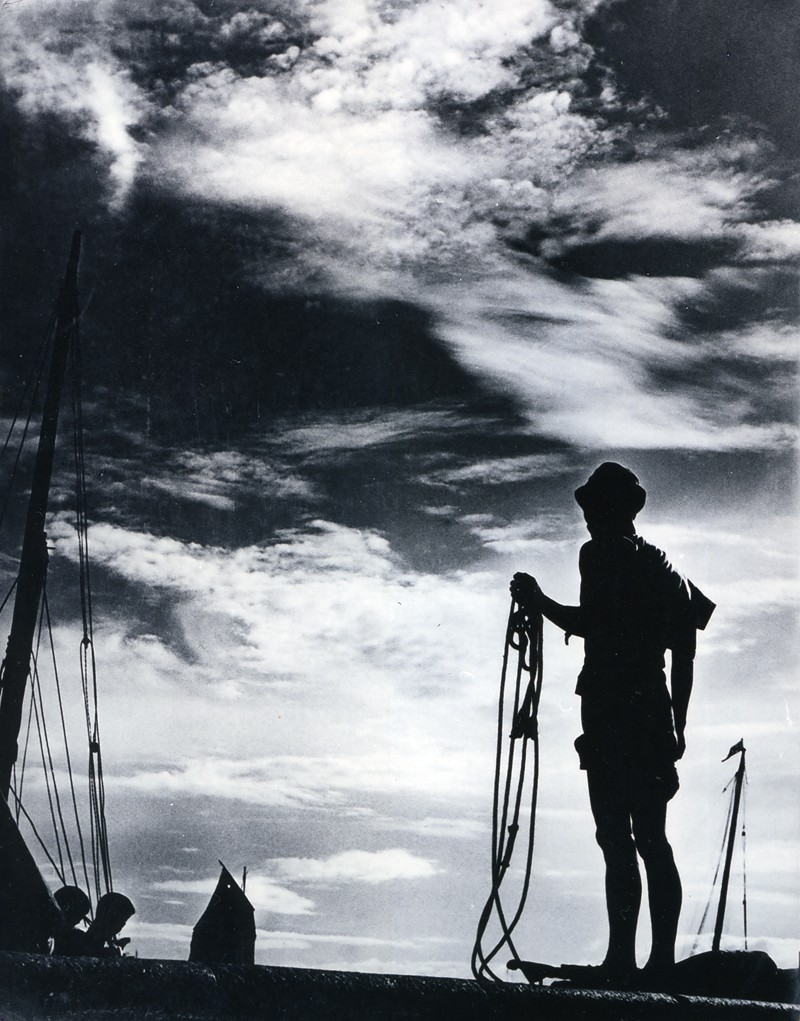
One corner of Tai Kok Tsui typhoon shelter. Yellow filter was used to create texture to the clouds. In the past the boats shipped in the sand for coolies to move. Those who sold labour for a living may not have the opportunity for higher education, but boasts morality and a sense of righteousness, contributing their honest efforts to society.
烈陽似火炙肌膚 茹苦含辛永記牢
牛鬼蛇神難利誘 志堅品格樹楷模
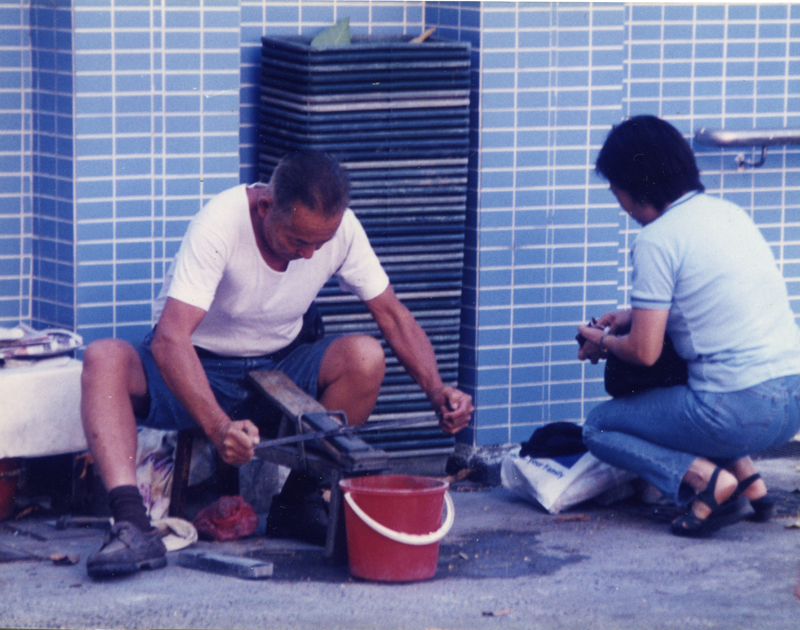
Knife grinding is disappearing from Hong Kong’s everyday life.
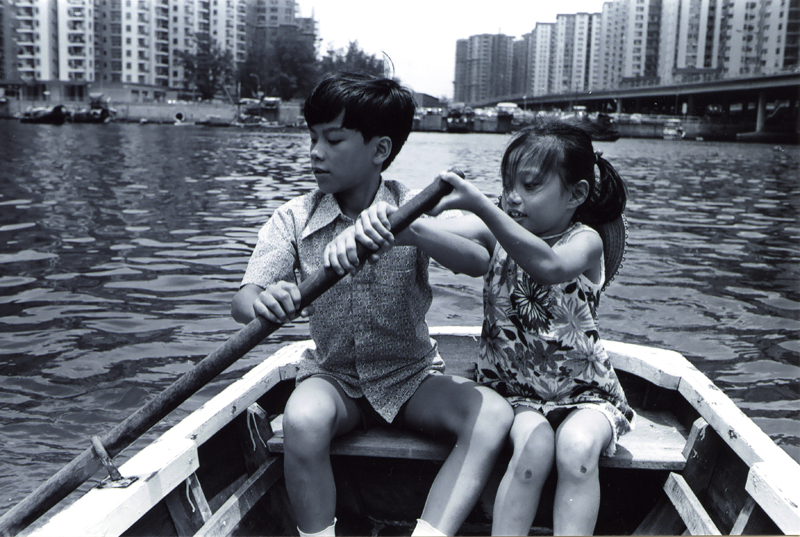
The background was Mei Foo.
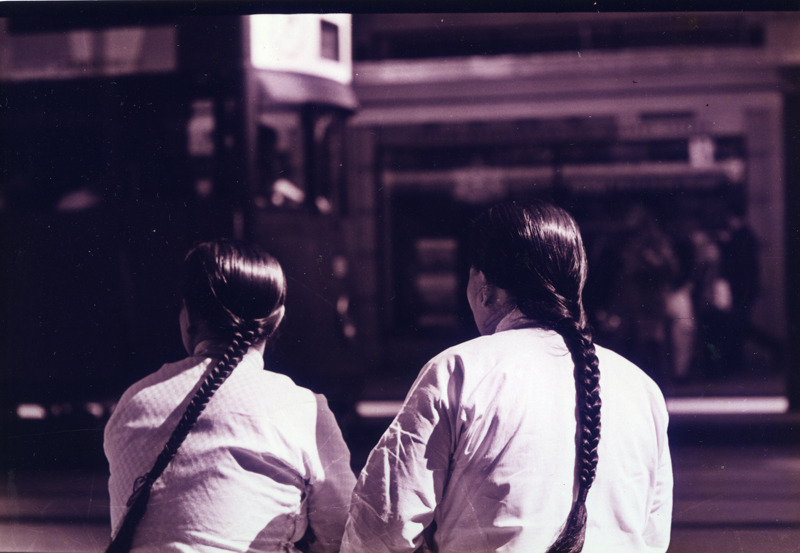
Domestic maids on the street. With industrial development local maids are no longer available. These maids usually came from Nanhai, Pangyu and Shun-tak. Most of those who came from Shun-tak preferred being single and were dressed in white shirt and black pants. The long braid was an icon of these maids.

Road expansion works at the slope at Caritas Medical Centre.
移山計劃確艱難 鋤鏟焉能破石頑
今日工程施爆鑽 蜿蜒大路越關山

Tai Po Road at the North Kowloon Magistracy in the old days (not yet constructed). Expansion works were conducted at the present-day Garden Company Offices. Ho Sau recalled there were workers holding red flags to stop the traffic at both ends; all traffic and pedestrians stopped as the gong was sounded at an increasingly urgent rhythm, and at its most urgent the explosion occurred. Another explosion occurred as the gong continued sounding. Traffic resumed only after the gong stopped. The side light created a low-key background from the rocks accentuating the subject – the power-drill – dismantling the rocks. The dust created by the impact creates a sense of motion.
移山計劃確艱難 鋤鏟焉能破石頑
今日工程施爆鑽 蜿蜒大路越關山
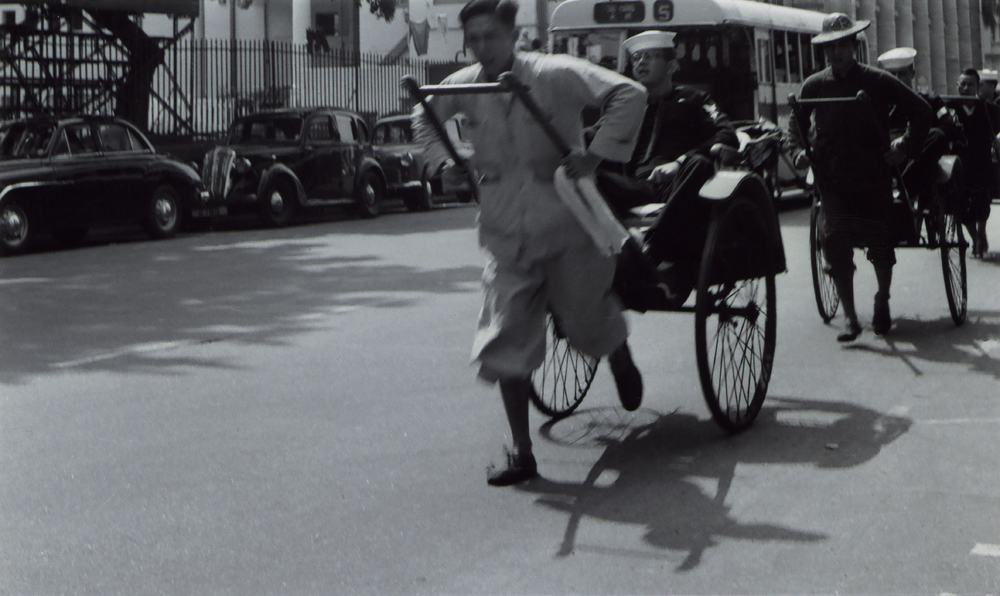
The sailors in blue were the major customers of rickshaws in those days.
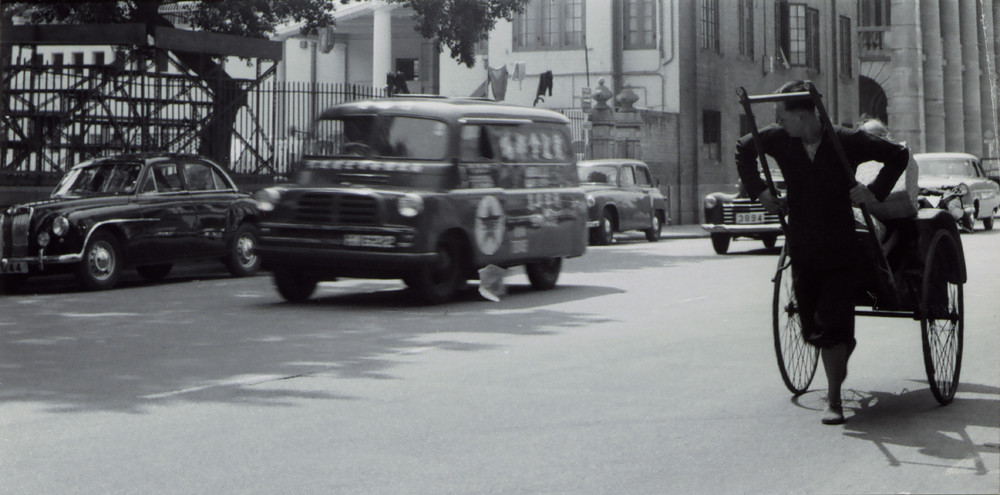
A rickshaw passing outside the Legislative Council Building at Chater Road and the Cricket Club.

Zinc bucket of the old times. In the past during droughts drinking water was at limited supply; each family would have a bucket ready at home.
|
|
